1. Coffee is beating tea as the nation’s favourite drink
2. Which products should you be stocking?
3. Don’t overlook pods when figuring out your range
4. Black tea and premium lines dominate
5. Customers looking for value lines in hot bevs
6. Coffee remains a target for shoplifters
7. Hot beverages go green as brands make eco changes
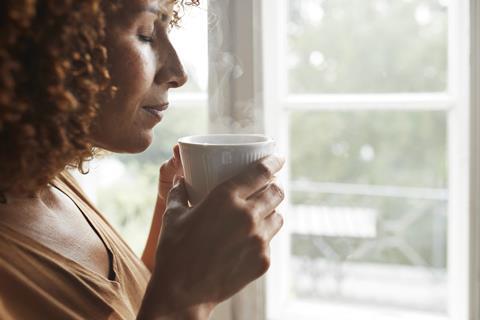
1. Coffee is now the UK’s favourite hot drink – outselling tea by 246 million packs
To paraphrase Taylor Swift, at tea-time everybody agrees – that the nation’s signature hot beverage is being outsold by coffee.
Stats show that java is flying off the shelves at almost twice the rate of tea with 533 million packs of coffee sold in the UK in the year to March 2023 versus 287 million packs of tea.
Anyone who has been reading the tea leaves on the hot bevs market for a while won’t be surprised. Coffee is the most popular drink worldwide [British Coffee Association] with energy and excitement around Barista-ready trends translating into at-home sales here in the UK.
“The coffee shop trend continues to grow, with 65.1% of consumers looking for coffee shop quality drinks to enjoy in the comfort of their own home [Kantar WPO – Total JDE, Total Market, Instant, Buyers (000), 52 w/e 09.07.23],” says Juliette McConnell, demand accelerator controller at Jacobs Douwe Egberts.
“Consumers are trading up on their weekly shop with products that allow them to easily recreate their favourite coffee shop experiences. This trend is being proven through the immense growth within the specialities and mixes segment.
“In fact, we have seen an increase in spend in June 2023 vs June 2022 on soluble specialities (Kantar WPO – Yr on Yr % Change, Total JDE, Total Market, Soluble Specialities, Spend (£000) 52 w/e 11.06.23], gaining greater penetration than any other segment in the last six years, with the segment now worth over £215 million [Kantar WPO – Total Market, Total Soluble Specialties, Spend (£000), 52w/e 27.11.22].”
For JDE this means investing in key products like Kenco Original Cappucino and Latte Sachets, which allow shoppers to recreate on-trend frothy coffee without the need for a coffee machine (or personal Barista). Also offering a coffee shop twist, the Tassimo Costa range taps into the appeal of High Street coffee at home.

2. Stocking the right range matters
The truth is that, whether shoppers choose tea or coffee, the hot beverages market is the real overall winner. In a cold and wet country hot bevs are always going to sell well, which is why a solid selection is a must-have for c-stores.
“With hot beverages people expect you to have a range – you can’t get away with just having Nescafe,” says Richard Inglis, owner of several Southampton c-stores.
“You need your Twinnings and your PG Tips and all the brands. As a category it’s a steady little mover and makes good money. And if the customers can’t come in and get a jar of coffee or a packet of tea bags I don’t think you can really say you’re meeting their needs!”
“With the coffee category now worth over £1.5 billion and around 24 million households in the UK buying coffee [both: Kantar WPO – Total Market, Total Coffee Ex Liquid, Spend (£000), 52w/e 09.07.23], it is important that retailers stock a diverse range across the category – especially as convenience and independent retailers continue to lead growth for the category,” confirms McConnell. “More specifically, with sales of coffee in the impulse channel rising compared to 2022, and around 10.6 million households buying JDE coffee products, retailers should consider stocking household favourites such as Kenco, L’OR, Douwe Egberts and Tassimo which allows shoppers to purchase convenient, but still delicious, ways to enjoy their coffee shop favourites.
Still, for c-stores space will always be tight. Dan Adams, senior category development manager for Tata Consumer Products advises a tight edit to ensure shoppers aren’t overwhelmed.
“With smaller stores in particular, our advice is not to overstretch your offering. Focusing on a core range with the right mix of pack sizes in the most shopped sectors of original black and decaf will attract both regular top up shoppers, and those making small changes to how they shop as they work to manage household budgets.”
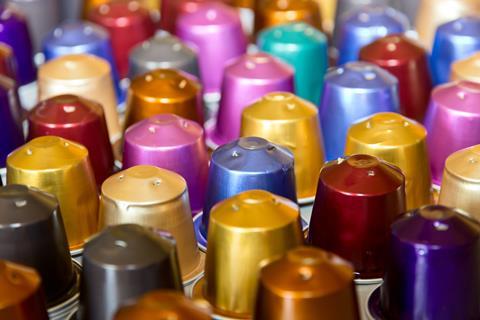
3. Total coffee machine sales rose from 123.2m in 2019 to 157.2m in 2022
One of the ways coffee is caffeinating the c-store channel is through machine sales. Over lockdown many people used their free time to get granular about coffee – which sometimes involved splurging furlough cash on a home system. The most popular choice was coffee pod systems, accounting for nearly half (48.7%) of domestic coffee machine sales.
Sue Nithyanandan from Costcutter Epsom makes sure to include pods as part of her packaged hot beverages offer.
“So many people have the pod machines now because they got them as gifts,” she says. “And of course, there are so many different machines so we go with the most popular pods. Initial ordering started with what our customers asked for – and then staff came and said what they thought would work. However, we are mindful not to stock too many of them and then clog up our shelves.”
Over in Southampton, Richard isn’t a fan of stocking the pods, citing the sheer number of options.
“To be honest with you it’s a bit of a nightmare,” he says. “If people have a coffee machine then they’re after a particular type of pod and if you don’t have it then you’re no good to them. You’re also competing with Amazon on price too as many people buy from there.”
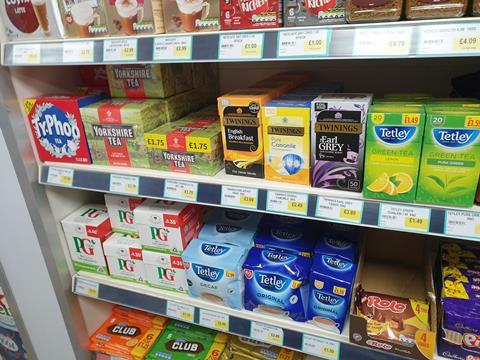
4. Black tea is still the sales winner, but premium matters too
Coffee might be winning the war but, as any c-store retailer will tell you, tea is still a key stock. With black tea accounting for 72% of sales [Nielsen YTD July 23] it makes sense to give everyday brews plenty of shelf space. Plus, there’s also the opportunity for stores to meet the needs of premium tea drinkers too.
“Although there’s evidence that some shoppers are scaling back on tea spend, true tea aficionados are holding strong,” says Adams.
“The desire for quality is sustaining regular and ‘treat for me’ buys at the higher end of the category. Premium brand teapigs is particularly benefiting, with volume sales up 8.7% year on year.”
Adams adds that October will see availability of the Winter collection of limited-edition teapig teas – a strong performer for the brand – plus its seasonal tea advent calendar.
“Despite the cost-of-living crisis, premium tea is driving growth in the category, with many tea drinkers moving away from the classics to try more exotic, adventurous blends,” says Gary Winslade, UK business development manager at Ahmad Tea.
“At Ahmad Tea, we’re seeing rising demand within the convenience channel for our herbal and green tea infusions, with blends such as Roobios & Cinnamon and Camomile & Lemongrass selling well. With all the taste and comfort of a classic cup of tea, these blends also offer something a bit different – vibrant flavours, vivid colours and enticing aromas.
“Within black tea, we’re also seeing a shift, with increased focus on exotic blends such as Ceylon, Chai Spice and Cardamom Tea.”
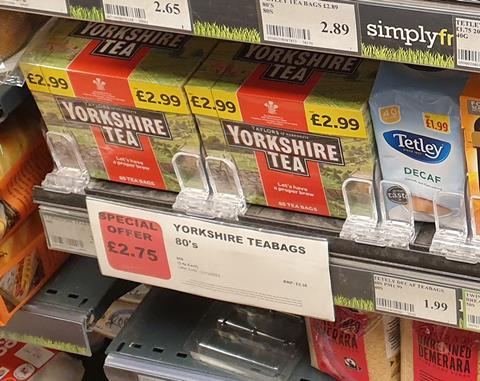
5. Hot beverage inflation has slowed, but value is still essential
The inflation free-for-all means prices for hot beverages (especially coffee) have been eye-raising for shoppers. But there’s at least some evidence it’s coming off the boil.
Figures from the Office for National Statistics show that the inflation rate for coffee dropped from 11.4% to 6.3% in the 12 months to July 2023. Tea dropped from 16% to 12.7% in the same period.
So, relief might be on the way for harried hot bev buyers. But, with the cost-of-living crisis rumbling on, the onus on c-store value isn’t likely to disappear anytime soon.
“With the current economic environment, value is a key deciding factor on what to buy, matched by the need for any spend to deliver on taste and quality,” says Adams.
“Everyday black with decaf remain the teas of choice for most households, with the top three tea brands accounting for over 61% [Kantar as above] of total sales, it is here that the majority of price promotions have maximum benefit.
“A well-timed promotion, is good for the brand and the retailer and a valuable tool to demonstrate value to shoppers.”
Richard has seen on the shelves how important it is to stock powerful promos.
“I think this market is incredibly promotion-driven at the moment,” he says. “So when I look at what we do in hot beverages there’s no one clear sales winner, people go with where the value is. For instance, if you’re into instant coffee you might be just as happy having a jar of Kenco as Nescafe if one of them is on offer for three pounds less.”
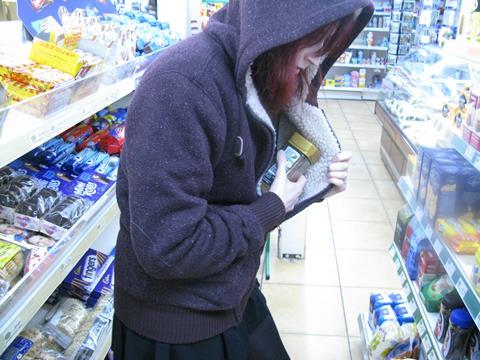
6. Protecting against shrinkage is vital
One unhappy consequence of inflation is the rise in shoplifting around the coffee aisle. Because, since tins of upmarket coffee can top nine quid, they’ve become a renewed target for thieves looking to steal and then sell products on.
“Interestingly enough it’s never something you have to worry about with tea bags,” says Richard. “But coffee is a big target for shoplifters – it’s one of those ridiculous things that people just go for. That means making sure it doesn’t go walking out the door. For us it’s about not overstocking and keeping a close eye on what’s on the shelves.”
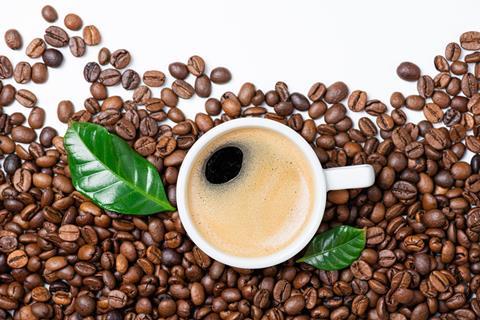
7. Brands are making new eco claims
In a crowded market the big players are using eco credentials to win favour with c-store shoppers. And one of the ways they’re signalling world-saving values is through format.
For example, JDE has reformulated some products, include Kenco Cappucino and Latte sachets, to reduce packaging weight by 27%.
For 2023 Tetley is hailing “the most significant change in its pack format for 30 years” with new plant (not plastic-based) tea bags and a new streamlined carton pack launching in the convenience sector this autumn.
“The compact design is around 25% smaller than competitive packs, meaning more efficient transportation and use of shelf-space in store; ease of like for like replacement; plus of course saving space in home cupboards,” says Adams.
“With the transition, Tetley will hit a major milestone of 97% of its packaging being reusable, recyclable or compostable in line with its commitment to the UK Plastics Pact to achieve 100% by 2025.”
Meanwhile, as a Fair Trade company Cafedirect have always put the communities it supports front and centre. Now it’s working harder to communicate the brand’s benefits with its ‘Better for Everyone’ strapline and logo, which comes as part of a major packaging refresh.
“We have been working directly with farmer cooperatives around the world for more than 30 years, and it’s important that we continue to communicate this so that shoppers can make an informed choice,” says Lesley Parker (she/her), brand controller for Cafédirect at distributor RH Amar.




















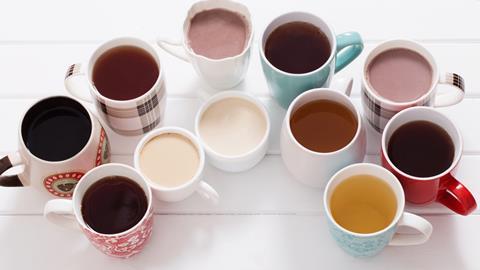



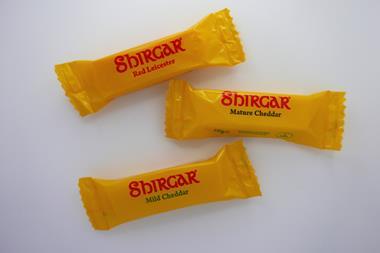








No comments yet